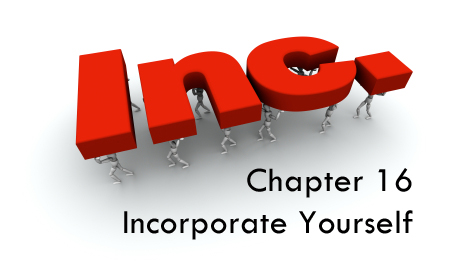Inc. Yourself by Coach Cowick
Incorporating yourself in business is how you define yourself professionally through your own personal brand. Ron McKeefery approaches this subject seriously, because when it comes to making a good impression, how others see you is very important. Many people including myself, know that first impressions are everything. The first time you apply for a job and receive an interview, you want to make a good impression as soon as you walk in the door. Most people will judge you at a glance to determine what kind of person you are; same goes for incorporating yourself. How are you presented to the world? What do others say about you? What will potential employers find when they “Google” you? When it comes down to it, what do you want people to know, when they research you?
In this chapter, I will discuss Ron McKeefery’s 5 tips to branding yourself, and help open doors to your profession.
Define Your Brand and Become an Expert
When you define yourself, don’t try to make things up to make you appear better, or try to be something you are not; everyone has different approaches. Determine your unique selling proposition, what makes you different from your peers. Define your strengths, passions and goals. When you identify your goals and set up a path to follow, it will help your craft your brand. Receive feedback from others you have coached or taught, know what they personally think of you as a person and a coach. If they respond and it corresponds with your brand, than it proves what you are doing is true to the core.
Everyday, I always try to better myself by asking clients about their opinions and how my coaching is. I am consistent with asking about their feelings, whether the exercise is too rough, are we moving too fast, is what I am doing too painful to their injury? By asking these questions everyday I am forming a brand, and my clients expect me to do this now. When my clients are asked, “how is your trainer?” I expect them respond accordingly to my traits.
Make Your Personal Brand Targeted
- Determine your Target: your target may or may not change down the line. If your goal is to be a Head Strength and Conditioning Coach one day and achieve it, that’s great! But once you receive this position, you may want to progress even further to be an Athletic Director, Head Manager, Owner, or Head Sports Coach. Who knows, set and goal and work for it!
- Identify your Competition: Once you have determined your goal and branding, search for like-minded individuals, understand who they are and what skills and abilities they offer. This will better prepare you to understand who you are up against and how you can further progress your skills and abilities. This business is tough, so you want to be better than your opponent.
- Create a Brand Statement: This statement should include who you are, what you do, and how you are different. Ron McKeefery calls this your “Elevator Pitch”. For example, “My name is Sean Cowick, I am a strength and conditioning coach and personal trainer. My methodology is to teach, coach, and promote strength, speed, and functional movement.”
Establish an Online Presence and Control Your Google Results
When applying for jobs, most employers will look through your resume, but they will also Google search you. Why? They what to see the kind of person you are, so what appears when your name is “Googled”, will also be taken into consideration before the hiring process. So what can you do to ensure when potential employers search your name, they find positive elements associated with you?
First, know that when negative results appear on the internet about you there is no real way to remove it. The only option is to overflow the web with positive links; creating profiles, building a foundation to market you and your brand. Typically, sites such as Facebook, LinkedIn, and Twitter rank the highest, so invest time to build these sites if you already have them.
Another way to optimize yourself is to create your own domain name (yourfullname.com) creating a site that represents you. Create a website to showcase your skills, specialties, testimonials, what makes you stand out above the others. Find ways to expose yourself and your brand through blogs, get published on other sites with credibility and renown. These are great ways to fill the search browser with positive results, and hide any negative results that may be floating out there.
Generate Brand Awareness Through Networking
Conduct site visits, attend clinics and conferences and make your presence known. Meeting with other Strength and Conditioning coaches is a great way to make the Strength and Conditioning community aware of your presence. Word of mouth is a POWERFUL marketing tool. I’ve recently attended a conference at ETSU (East Tennessee State University) home of the Olympic Training Site, hosted by Meg and Mike Stone. Many of the world’s top experts gathered to go over their recent studies and how strength and conditioning is essential, especially for athletes. I met many up and coming coaches, who will one day be the faces of strength and conditioning. They know who I am and it is important to reconnect and keep that link between us open.
Which brings me to four rules to keep in mind for networking, brought to you by Dan Schawbel, founder of Millennial Branding.
Rule 1: Mutualism
Create a win-win relationship with others in the strength and conditioning business.
Rule 2: Giving
Help someone, before asking them for help in return.
Rule 3: Targeting
Be specific when describing who you network with.
Rule 4: Reconnecting
Keep in touch, so your contacts remember you.
Creating Systems
Create a unique system as a Strength and Conditioning Coach, implement it into your programing and get it noticed by others. Ron McKeefery starts with five steps towards creating your own system:
Take Inventory
Identify types of actions you take regularly that help drive your department. Record your information, as this can be pertinent towards molding your brand.
Create a Process
Create a process for each of those actions, what needs to happen at each step to reach the next.
Brainstorm
Create new ways that this process can become better or more efficient. After making a system, find ways to improve on it. You don’t want to spend all day plugging in numbers when that time can be used for something even more productive.
Implement
After making a system, test it out and see how it works over time. It doesn’t do you any good second guessing it until it has actually been implemented.
Continuously Improve
The system may work great, but that doesn’t mean it’s flawless. Find ways to further improve on it, save time, and work more efficiently.
This chapter gave me better insight on how to get myself out there and get noticed. So I ask you three questions:
1. What is your brand?
2. What are your goals?
3. How do you plan on reaching your goals?
Did you like something your read in this blog? If so, how about adding a comment for Coach Cowick below? Our team of bloggers would like to know what you think and when you submit a comment our goal is to post it within 24 hours. Thanks for following this series.
“The views, opinions, and judgments expressed in this message are solely those of the authors and peer reviewers. The contents have been reviewed by a team of contributors but not approved by any other outside entity including the Roman Catholic Diocese of Raleigh.”


